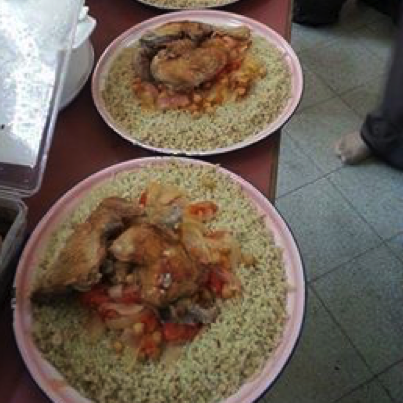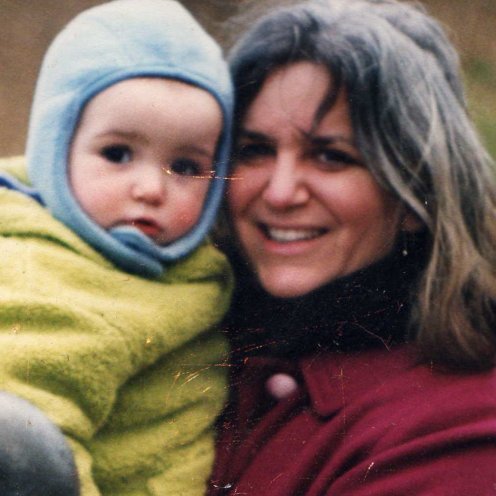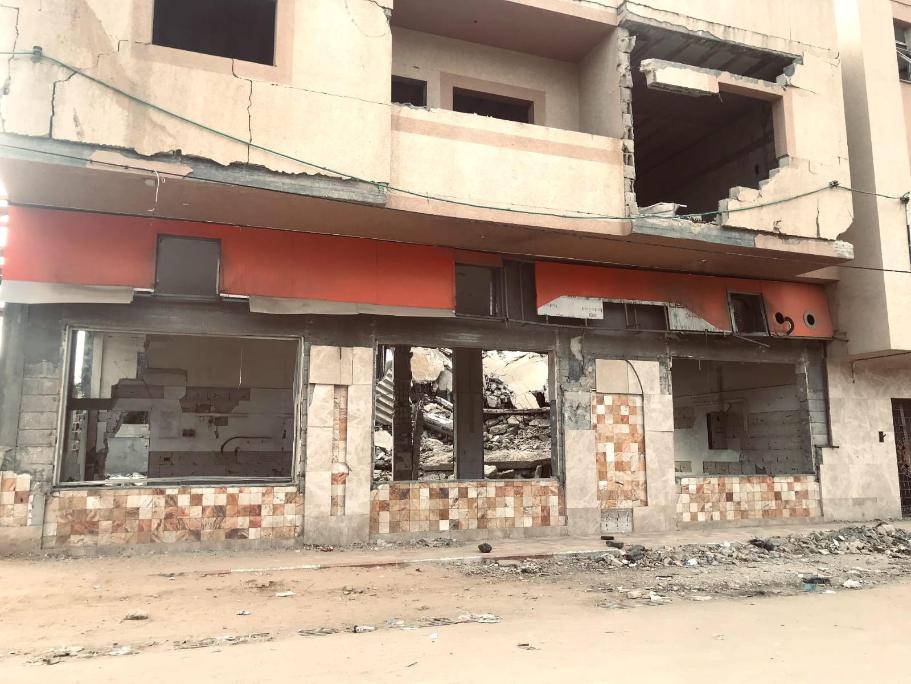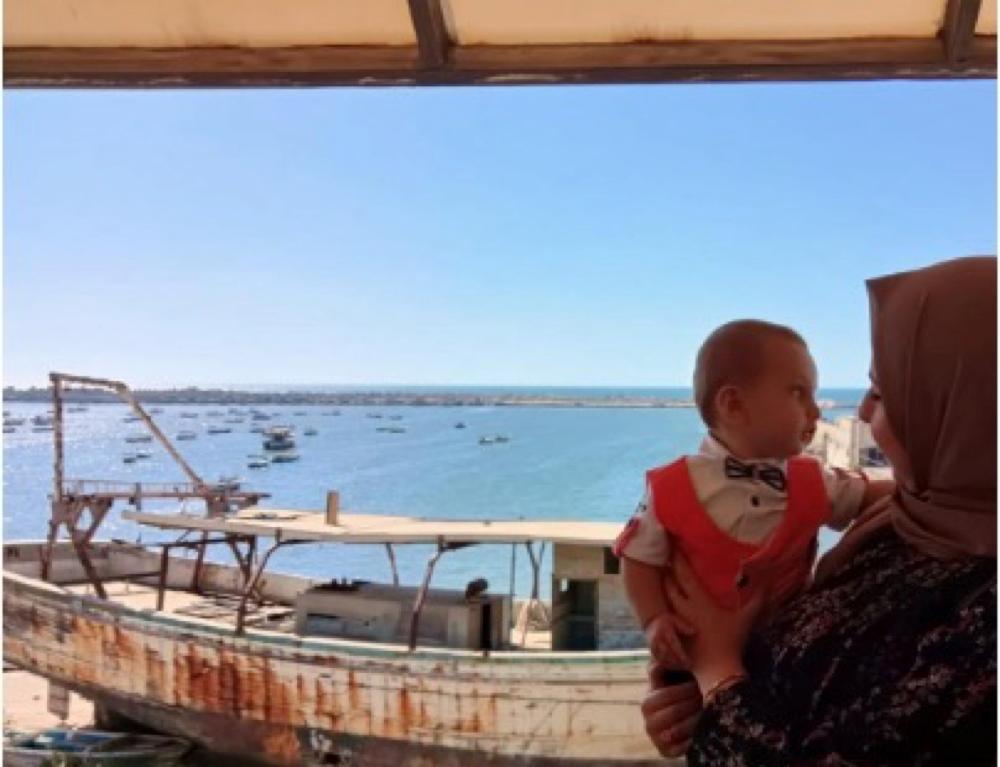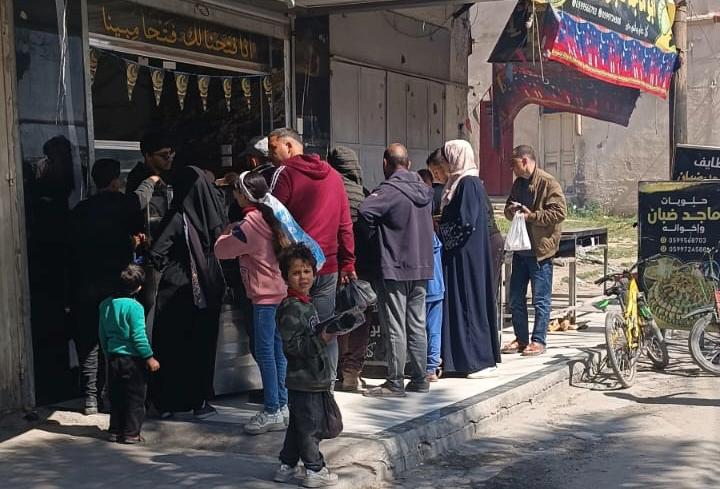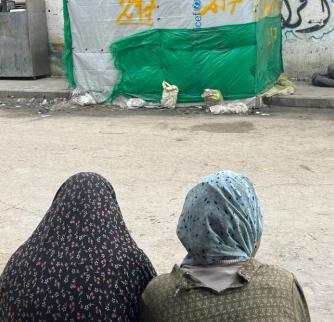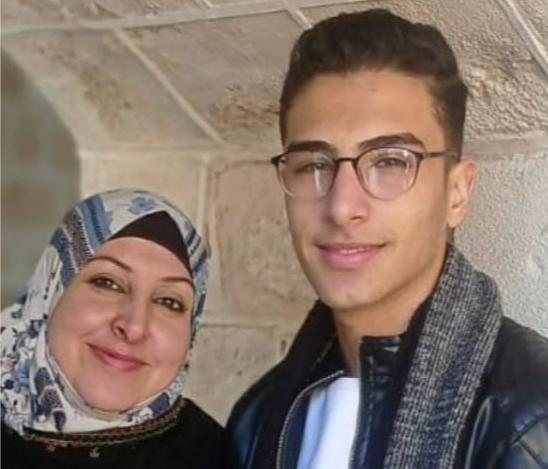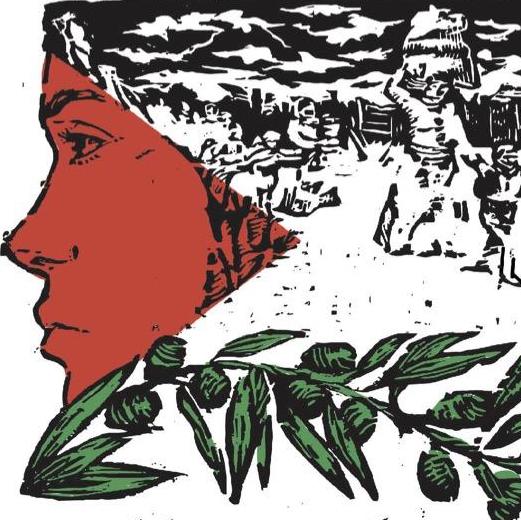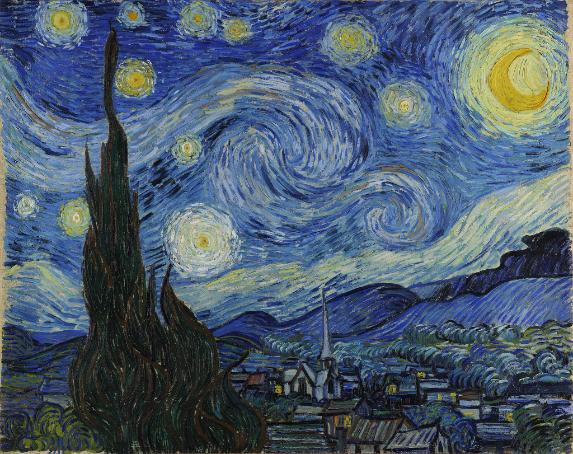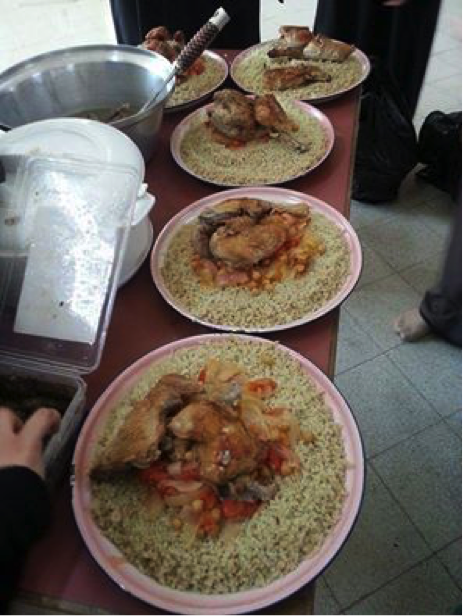
You may think you tasted the most delicious of foods the last time you ate one of your local specialties—an Italian pizza, maybe, or a holiday turkey. You thought wrong. One of the treasures of Gaza hidden behind the rubble and mayhem in the news is the food—my mother's food to be exact.
“Food is art,” my mother says, and watching people eat your cooking, laughing and enjoying themselves, is an experience to be treasured. I inherited the love of cooking from my mother. I am a very good cook and I love to eat even more. The Italians got it right. They say, “don't eat to live; rather, live to eat.”
My mother's signature dish, the dish I can cook but not yet make from scratch, is called maftoul. Maftoul is basically flour, water and some spices. It's a bit similar to couscous. It might sound like it is easy to make, but it needs an experienced hand to master. My mother grew up watching her mother make maftoul and she quickly picked up the art. She often jokes about how she “beat the master.”
My mother's recipe for maftoul requires waking up at 5 in the morning. The time you begin, however, is flexible, depending on the amount you wish to make. My mom considers it imperative to send food to her friends and neighbors, at least 10 of them, and thus wake up at 5 in the morning. Checking in on your neighbors and sending them food is part of our Muslim tradition. Food has a way of spreading love among people.
For maftoul, you need flour, water, onions, tomatoes, green pepper, chickpeas, chicken stock, salt, black pepper cumin, dill seeds and olive oil. I'm afraid the recipe doesn't state specific measurements. Everything is “eye-measured,” meaning my mother looks at the pot, cups her palm and sprinkles n the perfect amount of seasoning. I still haven't gotten the hang of that technique just yet, but until I do, I permit myself to taste everything!
The first step is to make the “topping” for the maftoul. Cook chicken (or veal, turkey or any other protein) to make the stock. It's pretty easy. You just stir a finely chopped onion in a pot with about a teaspoon of oil. Then you add your chicken and stir until it starts changing color. Add water, with the amount depending on how much meat you’re including. Season the “soup” with salt, black pepper, bay leaves and cardamom, then let it boil until the meat is tender. It's super easy and doesn't take a long time.
To make the maftoul, put the flour and some salt in a big pot and slowly add some water. You don't want to add too much water; you don’t want it to turn into dough. Instead, the mixture should be a bit wet, with a sandy texture. In addition, don't pour the water into one spot; spread it around. I tried my hand at this once, and we had to throw away a decent batch. My mom never asked for my help again!
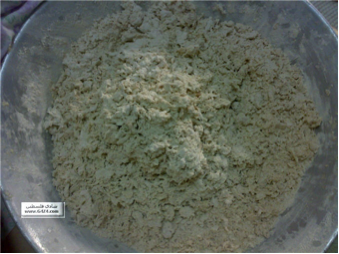
Once it is sand-like, put one hand in the mixture and the other one on top of it. (I forgot to say that you need strong wrists for maftoul!) Next, you basically massage the concoction. Move your hand in a semi-circle movement with firm pressure. Do this until it starts to form medium-sized balls. (See picture to the left.)
This process takes some time and experience to get right but it's not hard.
Tools for making and cooking maftoul
It is important to have a large sieve (kerbala in Arabic) on hand. We put the medium-sized balls of the mixture we’ve made through the sieve to make them smaller. Make sure to choose a sieve with small holes.
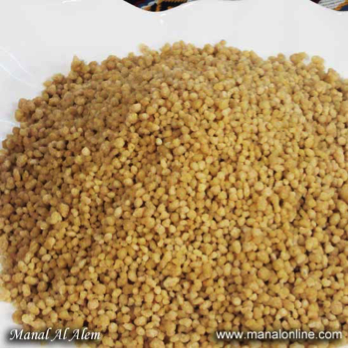
The final batch should look like the picture to the right. (If it doesn’t, don’t worry! My first batch was probably a lot worse.
Congratulations! You just made maftoul. Now, put a bit of vegetable oil on your palms and stir the maftoul in the pot with them. To quote my mother, the oil helps the small dough balls keep their shape while cooking.
Maftoul is cooked by steaming. And it is cooked twice. We use a special pan called a maftoulia. It's basically a pan with a colander on top. The important thing is that the colander fit tightly on the pan. Steam should not be able to leak out from the sides. It would ruin the maftoul by turning it into dough.
Wait until the water boils and the steam starts pouring through the holes of the colander before adding the maftoul. Again, it will turn into dough if the water isn't fully boiling. In Gaza, we call the steam coming out of the colander arosa, which means bride. I don't know where the name comes from but it makes sense. Like the arosa (the bride), the steam is white and takes forever to be ready!
While the first the maftoul steams, we make daqa. Daqa is sort of a dressing. We cook the maftoul with it the second time to give it more flavor.
The portion of dressing used should be about 20 percent of the total amount of maftoul. Chop three or four onions and three green chili peppers and crush them well with the cumin, a bit of salt and the dill seeds in a large mortar until all the oils and fragrance from the spices are released. Then add olive oil.
Let the daqa soak in the olive oil and check on the maftoul. It should take about 20-30 minutes to cook. You know it's ready when the surface hardens a bit and you hear a drum sound when you tap the pan. Once you take the maftoul out of the colander, put it in a large pot, add some water and stir.
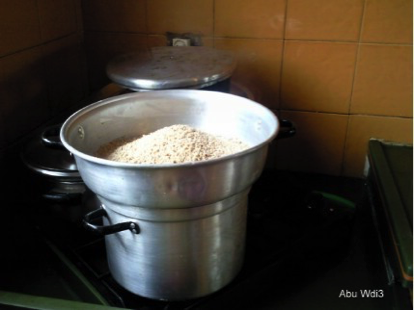
The second phase of cooking is the same but this time spread the dressing between two layers of maftoul. Make sure the pot is always half full of constantly boiling water. Wait until the steam comes out, put in half the amount of the wet maftoul, then add the dressing. Wait until the steam comes out again before adding the rest of the maftoul. After another 30 minutes, it should be done. You know it's ready when the onions in the dressing are cooked through.
The hard part is finally over. My best memories of food are when mom takes the maftoul off the stove. It was always super hot, and we'd wait until mom wasn't looking to start digging for the daqa. Mom overlooks the first five minutes of “bad manners” before she starts yelling, saying we'll “spoil our lunch; be careful, it's hot; and kids, don't make me come over!”
The final step is to make an onion-and-tomatoes stew to pur on top of the maftoul. Slice an onion and cook it until it's tender to the touch, then add the tomatoes with salt and pepper for seasoning . Let the combinaton simmer for 15-20 minutes, then add the chickpeas and some chicken stock and you have a "yakhna" (Arabic for stew).
Your reward for all that hard work is to indulge in a heartwarming meal. Add some chicken stock to the maftoul to soften it, put it in on a plate, add the stew and top it all with the chicken.
The best part about maftoul is that it's never made or eaten alone. The whole family comes together to make it. It's a comfort food made out of love. When cooked, the meal is served on one big plate and the whole family eats together from it. A perfectly cooked and tasty maftoul is considered an act of patriotism. Don't trust anyone who doesn't like maftoul!
If you're ever in Palestine, making and eating maftoul is the best way to blend in and feel at home.


